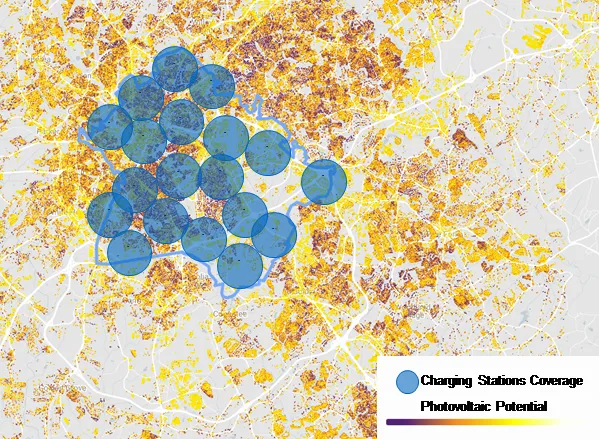
Based on https://www.google.com/get/sunroof/
Motivation
In the last decade, the German government has adopted far-reaching measures for reducing greenhouse gas emissions in order limit climate change. In addition to increasing renewable energy production, these measures include the electrification of the transport sector. The challenges in both areas, such as fluctuations in generation and consumption, high investments in infrastructure and acceptance by customers, can be addressed by coupling the sectors.
Project
The Chair of Automotive Engineering is therefore assessing the synergies between introduction of electromobility and renewable energies. The aim is to derive recommendations for action for the installation of photovoltaic systems, stationary battery storage and charging infrastructure based on estimates of charging requirements and site load profiles.
A simulation model has been developed which allows to model corresponding coupled systems of individual sites. Thus, use cases with high synergies can be identified. For example, semi-public charging infrastructure at schools, car parks or supermarkets could be operated with the photovoltaic electricity generated on site. With the help of map and aerial image data, the findings from individual locations can be transferred to larger areas. This analysis can be automated by using GIS algorithms and image recognition.
The results can support decision-makers in successfully designing the expansion of charging infrastructure, the installation of photovoltaic systems and the switch to electromobility.